Decisions, decisions.

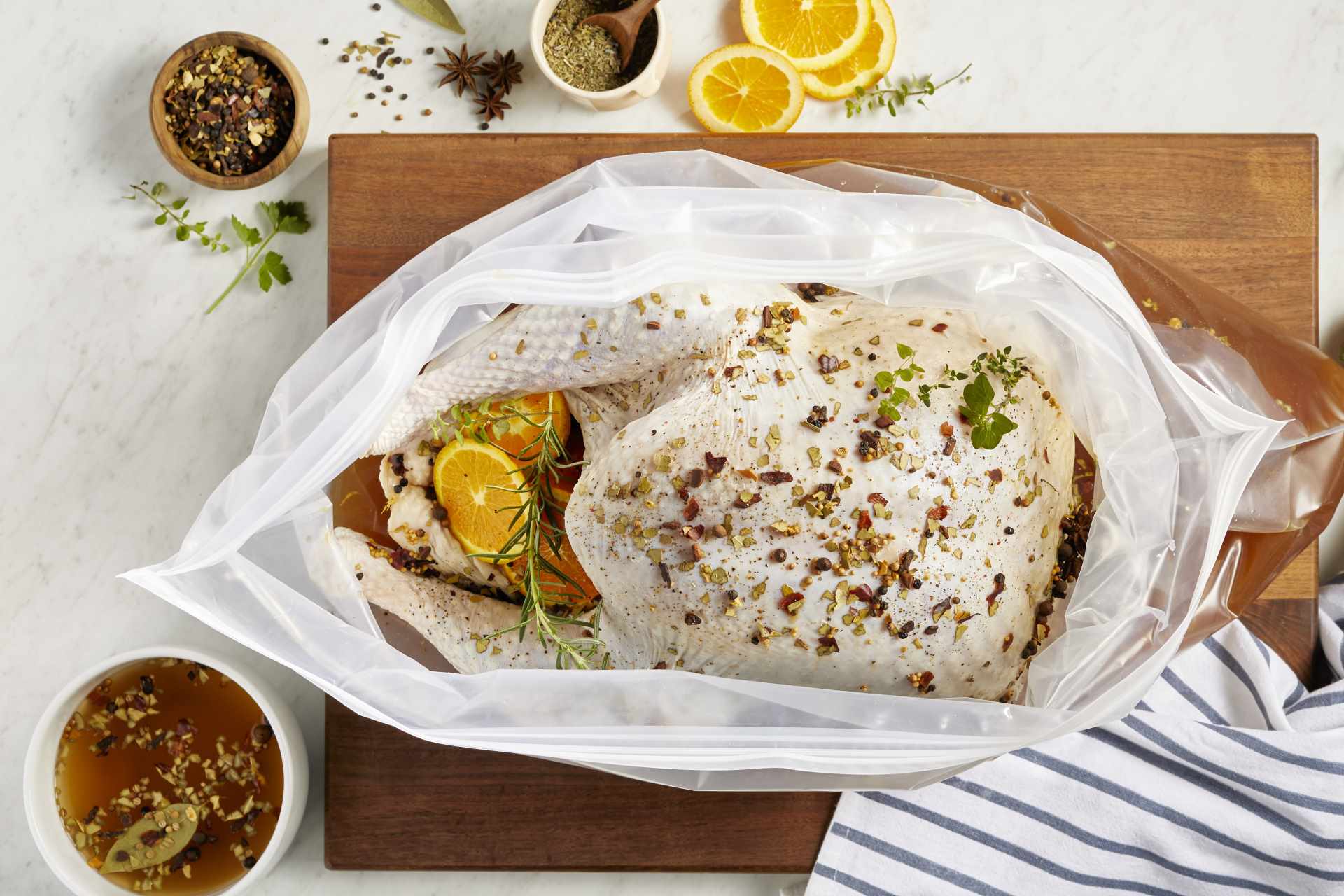
Every year, as the holiday season approaches, we’re faced with the exciting (yet high pressure) challenge of presenting the perfect turkey to our loved ones.
A lot goes into creating the “best” turkey: it’s a combination of taste, texture, presentation and even the aroma that builds up to the first bite. Two culinary elements that are absolute musts when it comes to your Thanksgiving bird are juiciness and flavor.
A nearly foolproof way to nail both components is with a brine.
Brining is a method both seasoned chefs and culinary enthusiasts swear by—a technique that promises the succulence and savoriness that’s craved above all else on the year’s most delicious holiday. In this guide, discover the science behind brining, its benefits and the products and steps needed to brine turkey for the best Thanksgiving Day.
Don’t let Thanksgiving catch you by surprise! Check out our Ultimate Thanksgiving Planning Guide for tips and tricks from our chefs to ensure the big day goes off without a hitch!
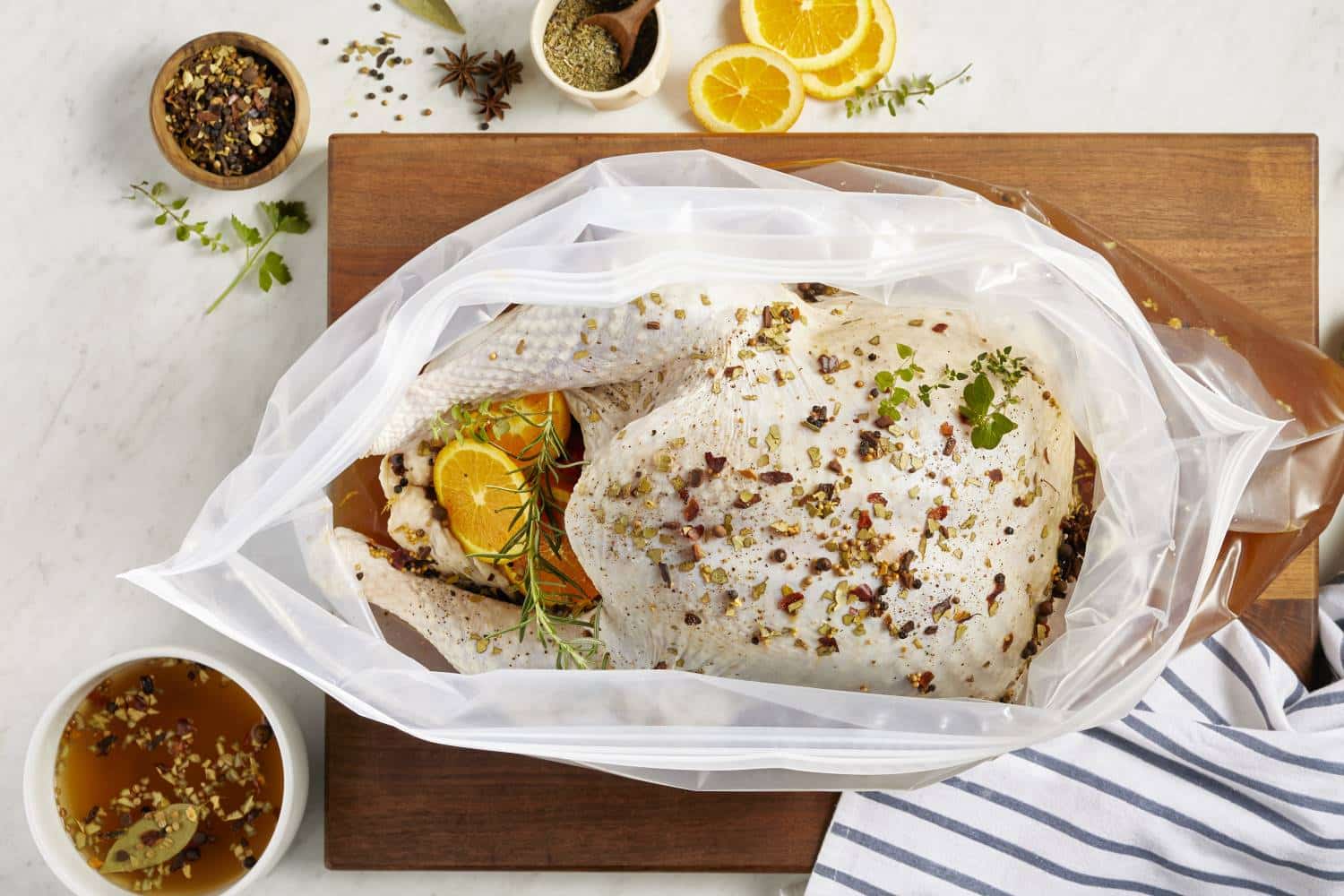
Brining is an age-old technique that involves treating the meat in a solution or mixture of salt and often various aromatics, sugars and spices. This process not only seasons the meat but also helps to keep it juicy and tender during the cooking process.
There are two primary types of brining: wet brining and dry brining. Both techniques are aimed at enhancing the flavor and juiciness of a turkey, but they approach the task differently.
Wet brining involves submerging the turkey in a solution of salt, water and often other flavorings, allowing the meat to absorb moisture and seasoning. This method can introduce additional juiciness but requires ample refrigerator space and a sizable container.
Dry brining, on the other hand, consists of rubbing salt (and sometimes other seasonings) directly onto the turkey, without the use of added water. This process draws out the bird’s natural juices, which then mix with the salt and get reabsorbed, deeply seasoning the meat and aiding in moisture retention.
Dry brining is more space-efficient and can result in a crispier skin when roasting, but it forgoes the flavor infusion potential that a wet brine’s additional ingredients offer.
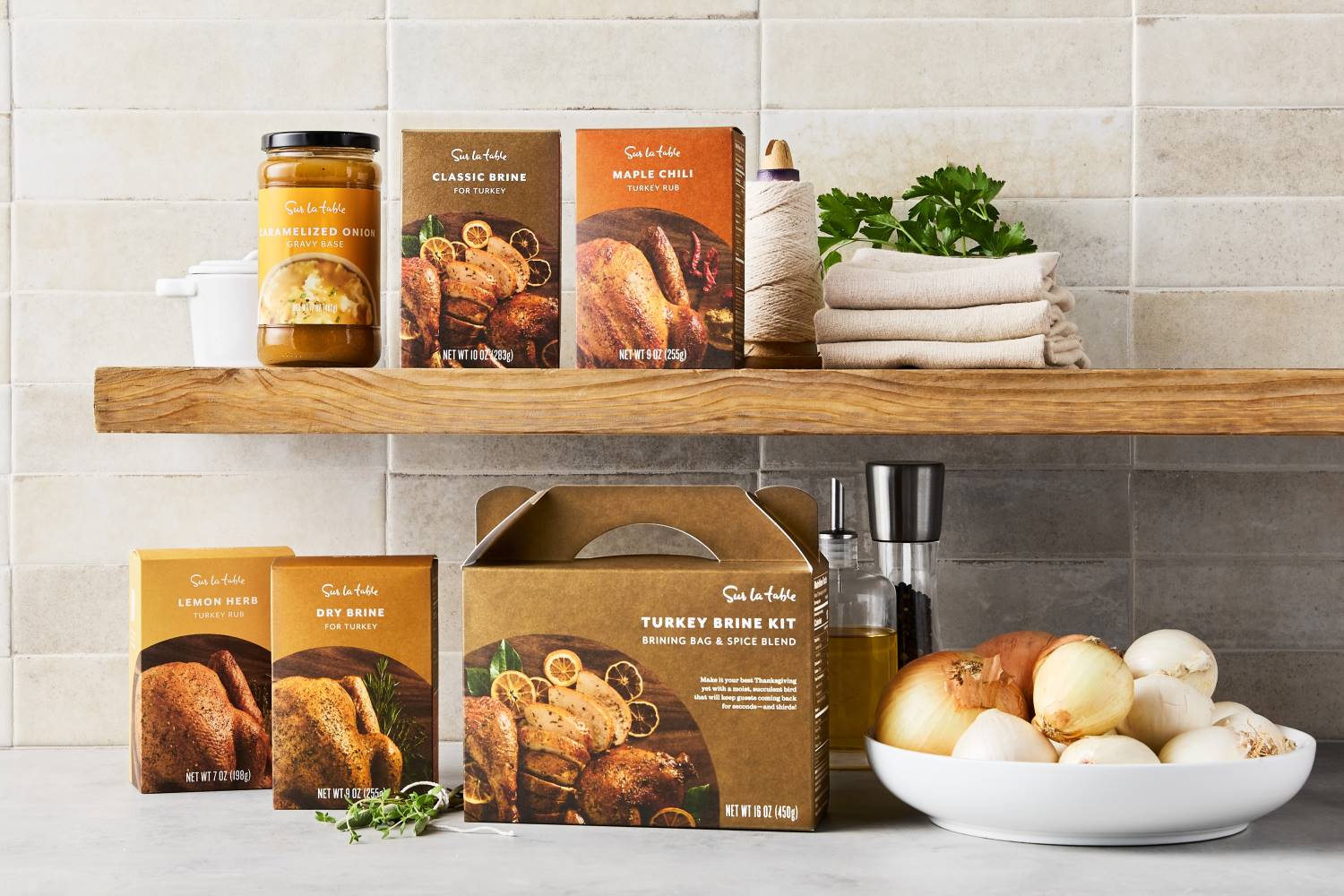
The “best” turkey brine or method often comes down to personal preference and the specific results you’re aiming for.
If you want a straightforward method that can introduce additional moisture and allows for flavor infusions from herbs, spices or liquids like cider or broth, then wet brining might be for you. If you prefer a method that requires less space, enhances the meat’s natural flavors without dilution and often results in crispier skin, then you may prefer dry brining.
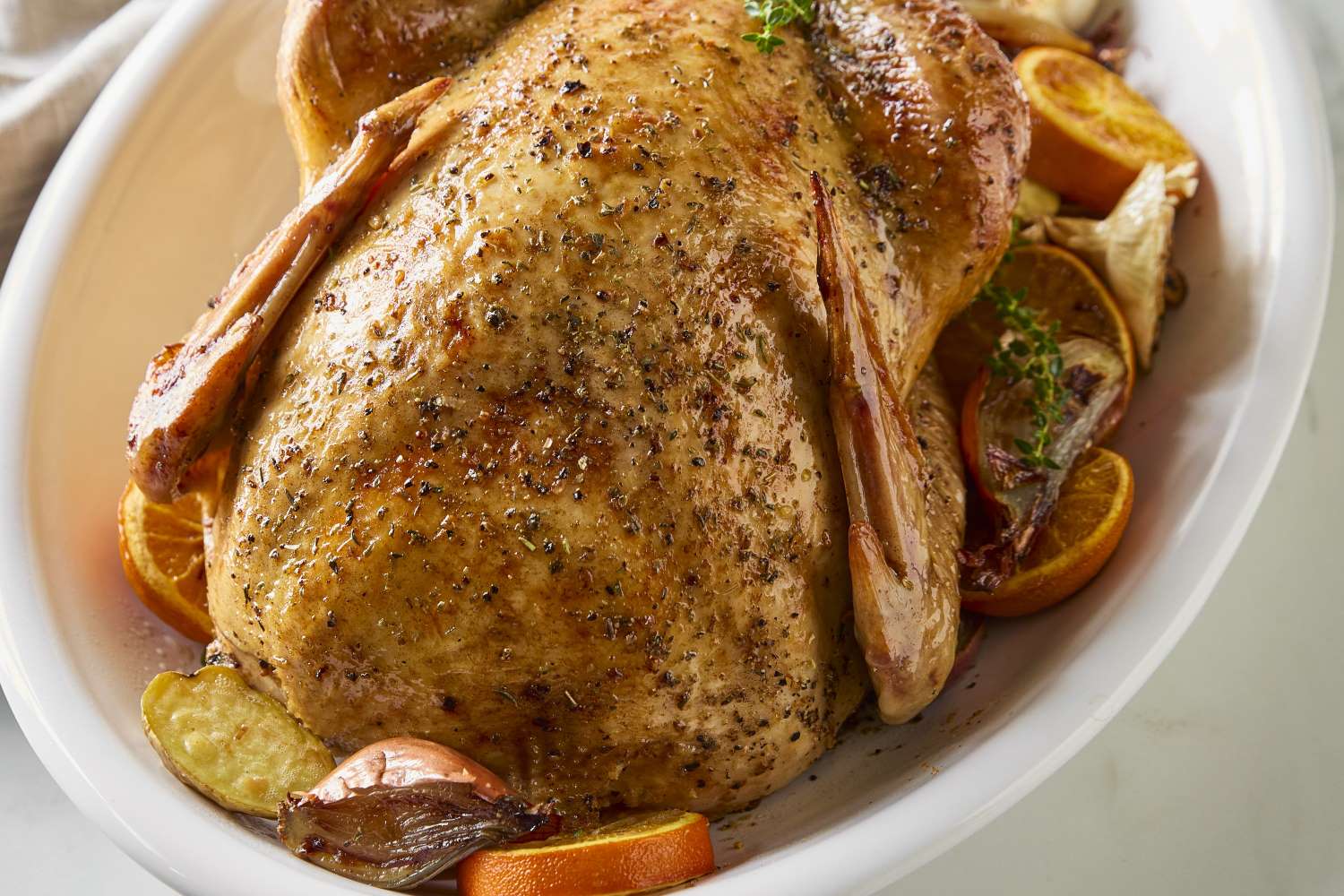
At its core, brining is a method of marination, but it’s underpinned by a few key scientific principles. Here’s the gist:
Osmosis: When the turkey is immersed in a brine, water molecules from the turkey (lower salt concentration) move to the brine (higher salt concentration) to equalize the levels.
Diffusion: Simultaneously, the salt from the brine moves into the turkey. This salt aids in denaturing the proteins in the meat, allowing them to absorb and trap more water—so it’s less likely to dry out when roasting.
The end result is that when cooked, the turkey retains more moisture, making for a juicier bird.
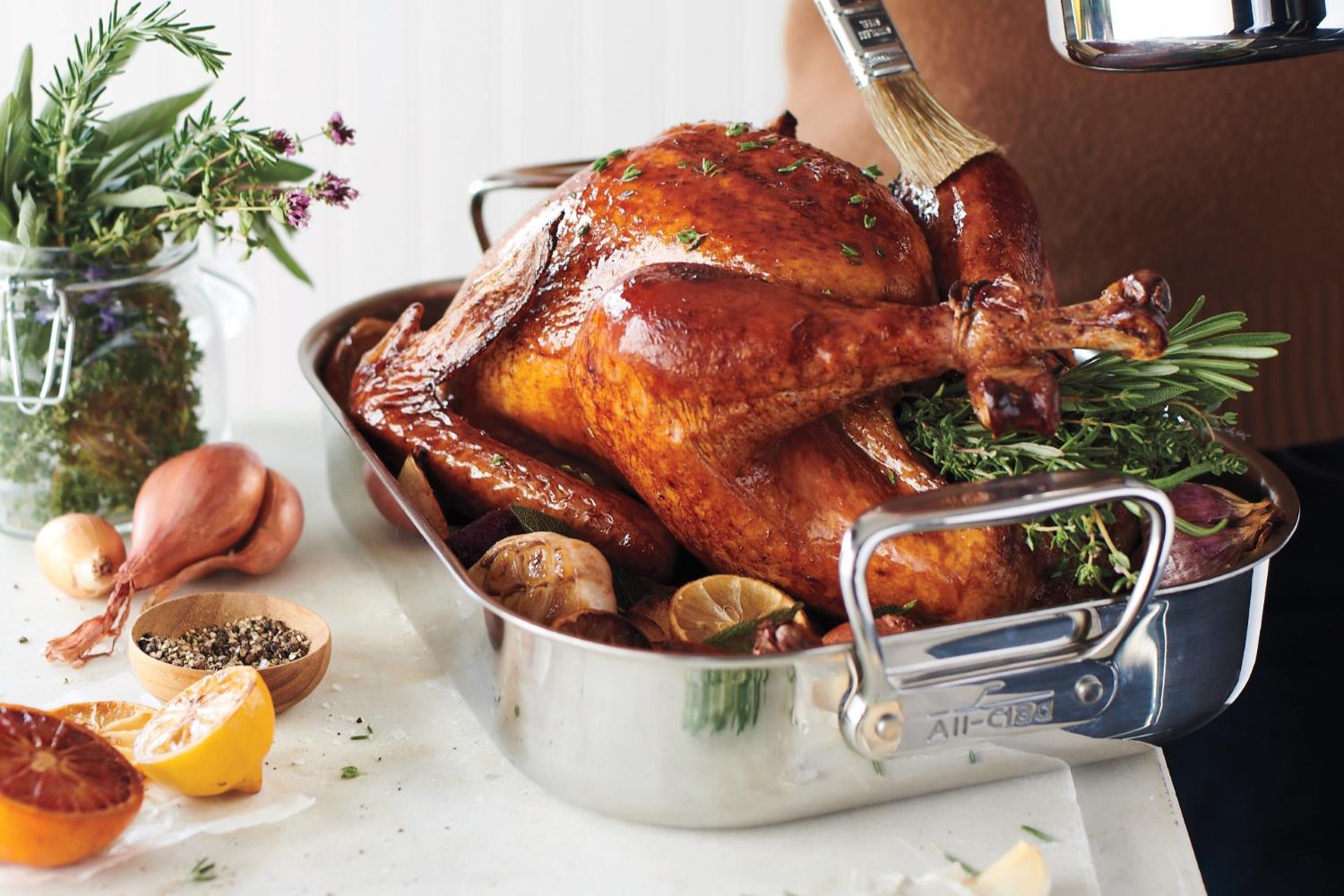
Brining a turkey offers several benefits that enhance both the flavor and texture of the bird. Brining helps with:
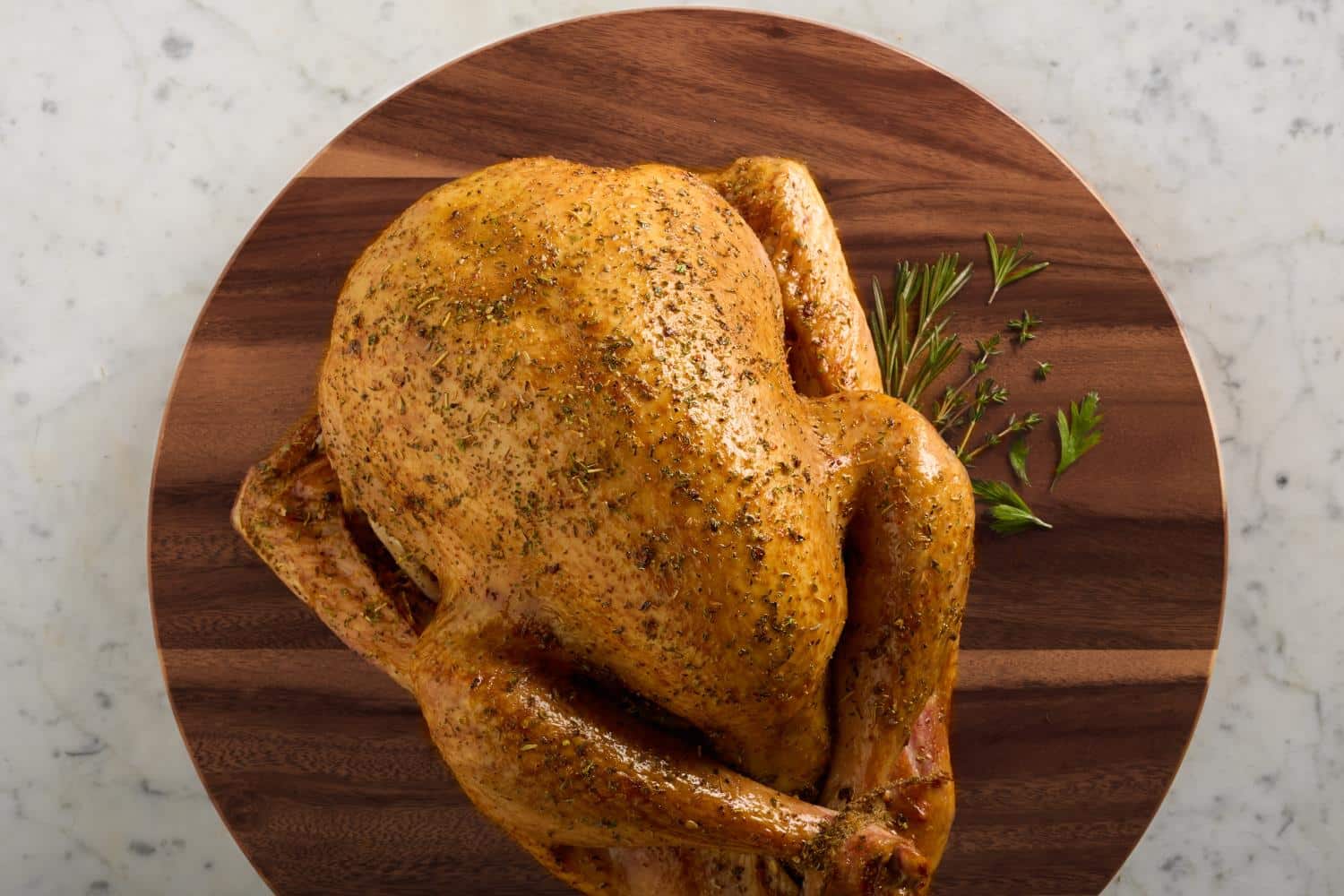
Brining is a simple yet effective technique that can transform your turkey from ordinary to extraordinary. With a little preparation and patience, you’ll serve a bird that’s not only seasoned throughout, but also incredibly juicy.
Key brining products to shop for include:
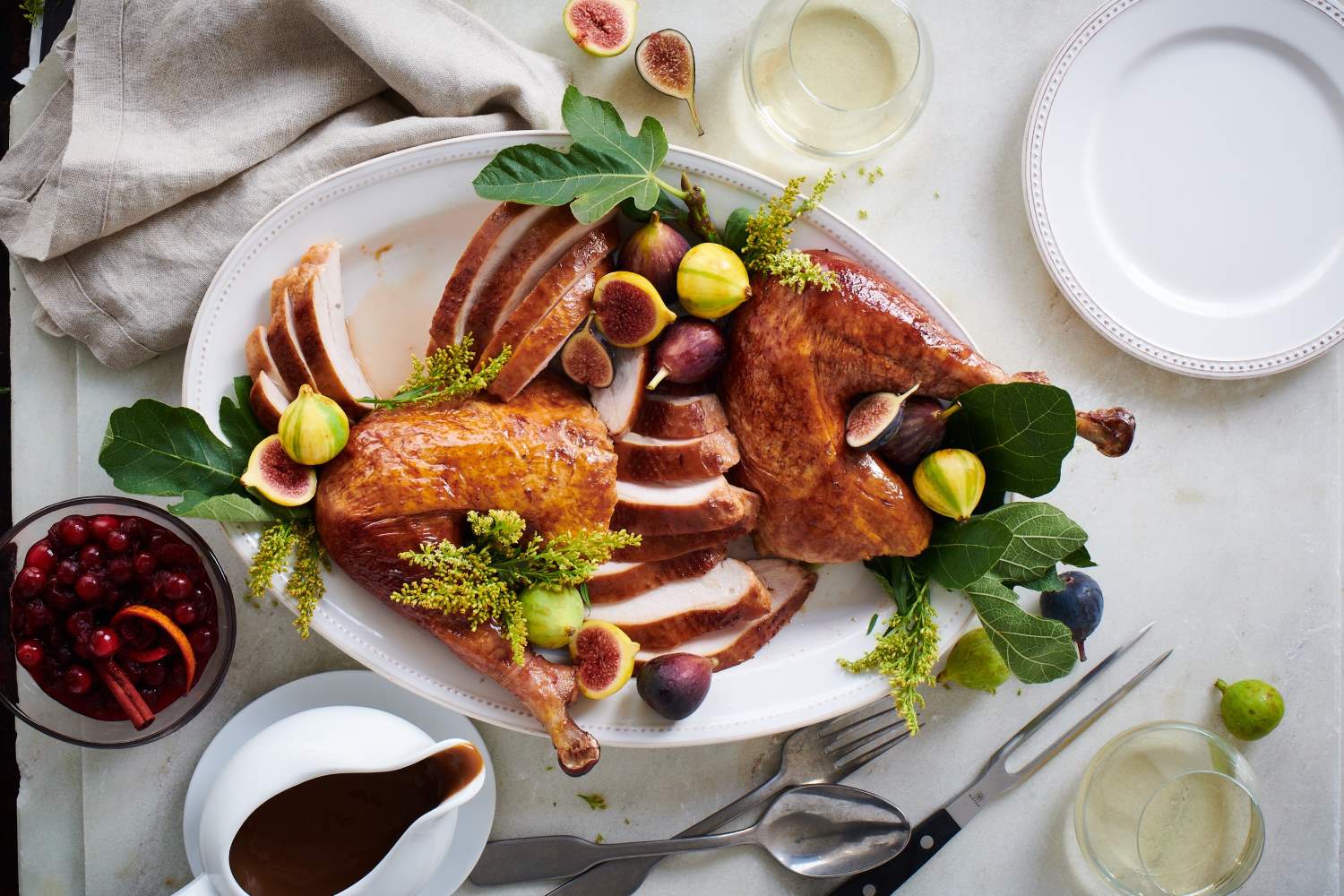
If you’ve never brined a turkey before, don’t stress. Brining is a very straightforward turkey preparation method with just a few steps. Here’s a breakdown on how to do it:
Choose your brine:
Decide between a wet or dry brine. For a wet brine, consider using a premade mix or creating your own solution with salt, water and optional flavorings.
Prepare the turkey:
Ensure the turkey is fully thawed. Remove giblets, the neck and any plastic or metal cages or pop-up thermometers.
Mix the wet brine:
If using a wet brine, dissolve the salt (and sugar, if using) in a portion of warm water. Once dissolved, add the remaining water and other flavor ingredients. Ensure the brine cools to room temperature or colder.
Apply the brine:
For wet brine: Place the turkey in a brining bag, large stockpot or food-grade bucket. Pour the brine over the turkey, ensuring it’s completely submerged. If necessary, weigh the turkey down to keep it submerged.
For dry brine: Rub the salt and any additional seasonings directly onto the turkey, ensuring an even coat.
Refrigerate:
Wet brine: Allow the turkey to soak in the brine for 12–24 hours, depending on size.
Dry brine: Let the turkey sit with the seasonings for 12–48 hours.
Rinse and dry:
For a wet brine, after the brining period, remove the turkey from the brine and rinse thoroughly under cold water. This ensures the exterior isn’t overly salty. For both methods, be sure to pat the turkey dry with paper towels. A drier skin will result in a crispier finish when roasted.
Roast the turkey:
Proceed with your preferred roasting method, and use a meat thermometer to ensure the internal temperature reaches a safe minimum of 165°F (74°C) in the thickest parts before serving.
Don’t let Thanksgiving catch you by surprise! Check out our Ultimate Thanksgiving Planning Guide for tips and tricks from our chefs to ensure the big day goes off without a hitch!
JOIN THE CONVERSATION